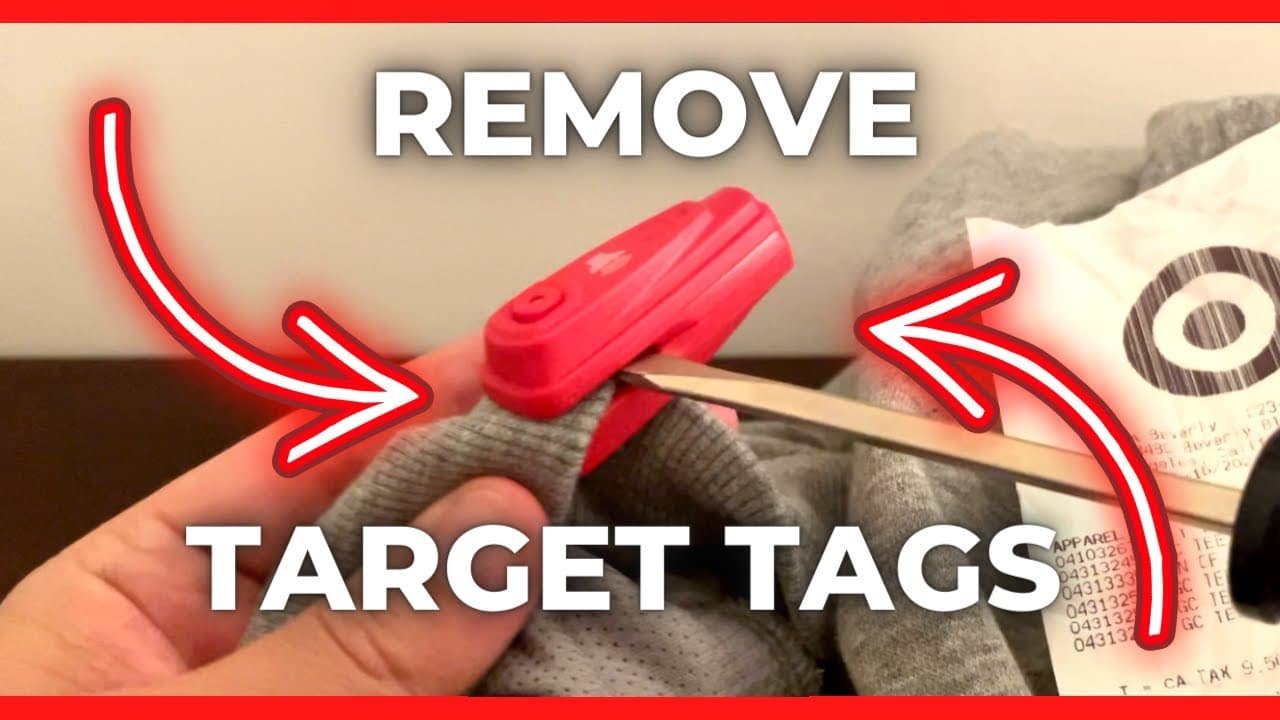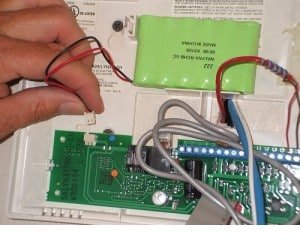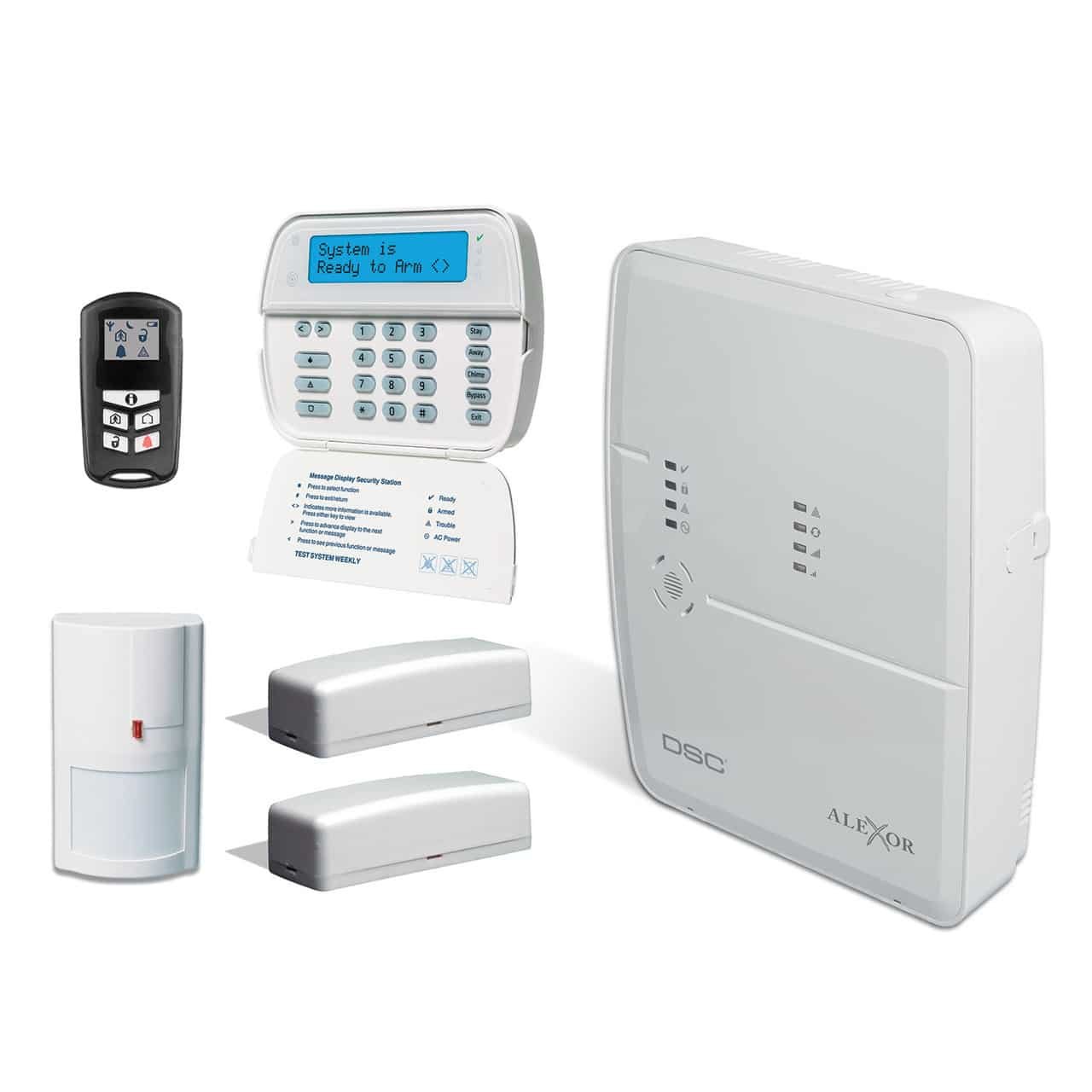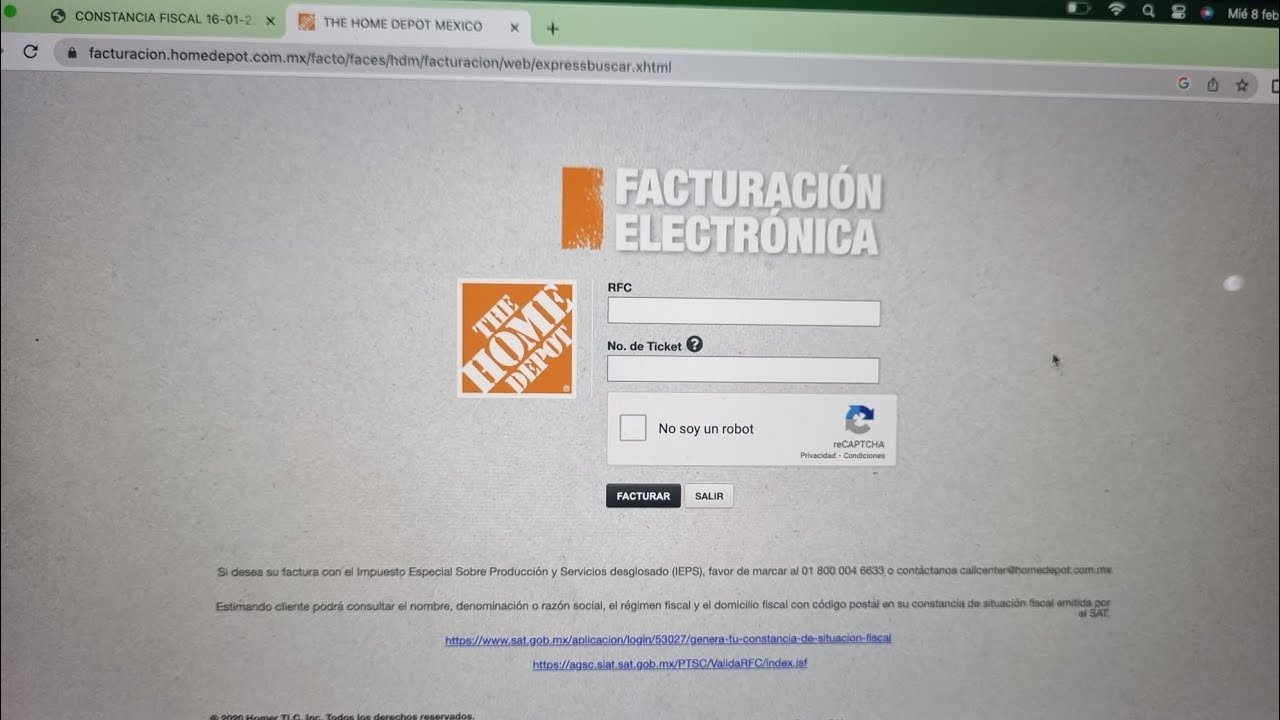Removing a security tag at home can be tricky. You need to be careful to avoid damage.
Understanding how to safely remove a security tag is crucial. Accidental purchases with tags still attached can happen. This can be due to oversight at checkout or faulty equipment. It’s frustrating to get home and find one still there. While it’s best to return to the store for removal, sometimes that’s not possible.
In such cases, knowing a safe method to remove it yourself is helpful. This guide explores steps for safely removing security tags at home. Ensure you follow precautions to avoid damaging your items. It’s important to proceed cautiously and understand the risks involved. Let’s dive into how you can tackle this issue effectively.
Credit: licn.typepad.com
Introduction To Security Tags
Removing a security tag at home can be tricky but possible with caution. Use rubber bands or pliers carefully to prevent damage. Always ensure the item is yours before attempting removal.
When you walk out of a store, the last thing you want is an unexpected alarm going off. Security tags are designed to prevent theft, but sometimes they are accidentally left on your purchased items. Removing them at home can be a challenge if you don’t know what you’re dealing with. Let’s dive into understanding these little devices better. ###Purpose And Types
Security tags serve a simple yet crucial purpose: they deter theft. They are a store’s silent guards, ensuring that items are paid for before leaving the premises. These tags come in various forms, each tailored to specific items. The most common types include magnetic tags, which are small and often square-shaped. You’ll also find ink tags, which contain dye that can spill if forcibly removed. And then there are radio-frequency tags that trigger the alarm system. Each type requires a different method for safe removal, so knowing which one you’re dealing with is essential. Have you ever purchased a dress only to find a bulky tag still attached? Understanding the type helps you figure out the right tools or methods needed to remove it safely. ###Common Locations On Clothing
Security tags are often strategically placed on clothing to make them hard to miss. Typically, they’re attached to seams, tags, or zippers. You might find them on the waistband of pants or on the hem of a shirt. This placement ensures they’re noticeable but not in the way of trying on the clothes. Why these locations? It’s all about visibility and inconvenience. Placing tags in these spots reduces the chances of a thief cutting them off without damaging the item. Next time you spot a security tag, take a moment to examine its placement. It can give you a clue on how best to approach its removal. Are you ready to tackle the challenge of removing a security tag on your own? Let’s continue exploring safe methods to do so in the comfort of your home.
Credit: www.youtube.com
Risks Of Diy Security Tag Removal
Removing a security tag at home might seem simple. Yet, it poses several risks. Many people try this to save time or avoid a store visit. But they might end up facing unexpected problems. These can affect both the clothing and legal aspects.
Potential Damage To Clothing
Security tags are designed to deter theft. They are tightly secured to clothes. Trying to remove them without proper tools can harm the fabric. The fabric might rip or tear. This damage often makes the item unwearable. Some tags contain ink that can spill. If broken, the ink stains the fabric. Stains are often permanent. This ruins the look of the clothing. It might also affect the resale value.
Legal Implications
Removing a security tag at home can lead to legal issues. Stores use these tags to prevent theft. Tampering with them might be seen as suspicious. It could lead to accusations of shoplifting. Even if you bought the item, proving it can be tough. This situation could involve the police. Legal troubles can be time-consuming and costly. It’s best to avoid these risks.
Tools Needed For Removal
Removing a security tag at home might seem challenging. But with the right tools, it’s possible. The tools you need depend on the type of tag. Some can be removed with basic household items. Others may require specialized tools. Let’s explore the options you have.
Basic Household Items
Some household items can help remove security tags. A rubber band is useful. Wrap it tightly around the pin. This can loosen the tag’s grip. A pair of pliers is another option. Grip the pin firmly and twist. This might release the tag. Ice might work too. Freeze the tag to make it brittle. Then gently tap it to break the mechanism.
Specialized Tools
Using specialized tools can be more effective. A security tag remover is designed for this task. It’s available online or in hardware stores. This tool can easily detach the tag. A magnet is another specialized tool. High-strength magnets can deactivate the locking mechanism. This allows you to remove the tag without damage. Be cautious and ensure you use the right magnet strength.
Step-by-step Removal Process
Removing a security tag at home can be tricky. But with the right steps, it’s possible. This guide will show you how to remove different types of tags safely. Get ready to learn how to prepare your workspace and handle various tags.
Preparing Your Workspace
Find a quiet spot to work. Ensure the area is clean. Safety is crucial. Remove any sharp objects nearby. Keep your tools handy. You might need scissors, pliers, or a magnet. Make sure you have good lighting. This helps you see the tag clearly. Ensure your workspace is comfortable. A stable surface is essential for success.
Removing Different Types Of Tags
Different tags need different techniques. Magnetic tags require a strong magnet. Place the magnet on the tag. Gently pull the tag apart. Ink tags are tricky. Be gentle to avoid spills. Use pliers to loosen the pin. Plastic tags need a different approach. Cut the tag with scissors carefully. Avoid damaging the item.
Alternative Methods
Discover simple ways to remove security tags at home safely. Try using rubber bands or strong magnets. Handle tools carefully to avoid damaging the item or causing injury.
Removing a security tag at home can be a bit tricky, but it’s not impossible. While it’s always best to return to the store for professional removal, sometimes circumstances necessitate a DIY approach. Alternative methods can be your friend in these situations. These methods are not foolproof, but they offer practical solutions when you’re in a pinch. Let’s dive into a few creative tactics that might just save the day.Using Rubber Bands
Ever thought a simple rubber band could be your hero? It’s surprising how effective this everyday item can be. Wrap a thick rubber band around the pin of the security tag, making sure it’s tight. The band provides grip, helping to loosen the pin when you pull it. Gently twist the tag back and forth, and you might find it comes loose. Caution: Be gentle to avoid breaking the tag and damaging your item.Applying Heat Or Cold
Temperature changes can work wonders on stubborn tags. Heat can expand the plastic, while cold can make it brittle. Try using a hairdryer to apply heat directly onto the tag for a few minutes. This may loosen the adhesive or plastic, making removal easier. Alternatively, place the item in the freezer for an hour. The cold might make the plastic more susceptible to cracking. Always handle with care to avoid damaging your garment. These methods can be effective, but they come with risks. Ask yourself: is it worth potentially damaging your item? Always weigh the risks against the benefits. Do you have any other clever tricks up your sleeve for removing these pesky tags?
Credit: www.ebay.com
Preventing Ink And Damage
Removing a security tag at home can be tricky. You want to avoid ink spills and fabric damage. These security tags often have ink cartridges inside. If broken, they can ruin your clothes. Proper handling is key. This guide will help you manage ink tags and protect your fabric.
Handling Ink Tags
Ink tags are designed to deter theft. If tampered with, they release ink. This ink can stain your clothes permanently. To handle ink tags safely, use gentle pressure. Avoid twisting or pulling the tag forcefully. Keep the tag away from important areas of the fabric. Use tools carefully to avoid triggering the ink.
Safeguarding Fabric Integrity
Protecting the fabric is crucial. Rough handling can tear or stretch the fabric. Use a soft cloth between the fabric and tools. This prevents direct contact and reduces stress on the fabric. Always work on a flat surface. A stable surface provides better control and reduces risk of damage.
Troubleshooting Common Issues
Troubleshooting common issues with security tags can be tricky. Not every tag will cooperate. Some might be more stubborn. Others may leave behind ink stains. These problems require patience and a little know-how. Understanding these challenges helps in handling them effectively.
Dealing With Stubborn Tags
Some security tags are tough to remove. They may have stronger pins or locks. Use a magnet or rubber band technique. These methods can help loosen the pin. Sometimes, using pliers gently can be effective. Be careful to avoid damaging the clothing. Always work in a well-lit area. This ensures you see what you are doing. Patience is key. Rushing can cause mistakes.
Managing Residual Ink
Ink tags can cause messes. They often spill when tampered with. To manage ink stains, act quickly. Use cold water to rinse the area. This helps prevent the ink from setting. Blot with a clean cloth to absorb excess ink. Avoid rubbing as it can spread the stain. Commercial stain removers can be helpful. Always test on a hidden area first. This ensures the fabric won’t get damaged.
Safety And Precautions
Removing a security tag at home requires caution to avoid damage or injury. Use pliers carefully to break the pin. Keep hands protected to prevent accidental cuts or bruises.
When attempting to remove a security tag at home, safety and precautions are crucial. You might be eager to free your new purchase from its unexpected appendage, but rushing the process can lead to mishaps. Taking a moment to consider the safest approach will save you from potential accidents and damage to your item.Protective Measures
Before you start, gather the necessary tools. A pair of pliers, rubber bands, or even a strong magnet can sometimes do the trick. However, ensure these are in good condition to prevent any slip-ups. Wearing protective gloves is wise. It helps avoid cuts or bruises if the tag’s pin is sharp. Also, keep a clean workspace. A clutter-free area allows you to focus better and reduces the chance of injury.Avoiding Injury
Consider the structure of the security tag. Most have a pin and a locking mechanism. Knowing this, apply pressure carefully to avoid slipping. If you’re unsure, it’s better to pause and reassess rather than act hastily. Think about the positioning of your hands. Keep your fingers away from the pin area. This simple step can prevent painful accidents. If you’re using tools, ensure you have a firm grip to maintain control. Have you considered the consequences of a wrong move? Accidents happen fast, and a small mistake can lead to bigger problems. Take your time, and if in doubt, consult someone with experience or seek professional help. Your safety is worth more than a bit of inconvenience.Conclusion And Final Thoughts
Removing a security tag at home may seem simple. Yet, it requires careful attention. The process can be tricky if not done properly. Damage to the item or injury can occur. Understanding each step ensures success. It’s crucial to handle this task with care.
Summary Of Tips
Start by identifying the type of security tag. This helps in choosing the right method. Use household tools like pliers or rubber bands. These can help in removing the tag. Avoid cutting or forceful methods. They might damage the item or cause harm. Always test the method on an old piece first. This ensures safety.
Considerations Before Attempting
Think about the risks involved. Removing security tags can be risky. You might break the item or injure yourself. Consider the legal implications too. Removing tags from unpaid items is illegal. Ensure you have the receipt for the item. Also, think about the tools needed. Make sure you have them ready. Finally, assess your skills. If unsure, seek professional help.
Frequently Asked Questions
How Do You Remove A Security Tag From Clothes At Home Target?
Use pliers to grip and twist the tag until it loosens. Be cautious to avoid damaging the garment. If unsuccessful, visit a Target store for professional assistance. Attempting to remove tags at home can be risky and may cause harm to the clothing item.
What Deactivates Security Tags?
Security tags deactivate using a magnetic detacher or an electronic tag remover. Store employees use these tools. The tools release the locking mechanism on the tag. These devices ensure merchandise security and prevent theft. Proper training is essential for effective deactivation.
Always follow store procedures for safe removal.
How To Remove Tag Pins Without Pin Removal Tool?
Use a strong magnet to unlock the pin. Place the magnet on the tag’s flat side and slide it.
How Do You Demagnetize Security Strips?
Use a deactivator pad or wand at checkout to demagnetize security strips. Swipe the item over the device. This neutralizes the magnetic field, preventing alarms from triggering when exiting the store. Ensure proper alignment for effective deactivation.
Conclusion
Removing a security tag at home can be tricky. Use caution. Avoid damaging the item or injuring yourself. Household tools may help but can also cause harm. It’s best to visit the store for proper removal. This ensures safety and prevents damage.
Always check store policies before attempting removal. Better safe than sorry. Protect your purchase and yourself. Follow these steps for peace of mind. Stay informed and be careful. Your safety and the item’s condition are important. Make the best choice for both.















